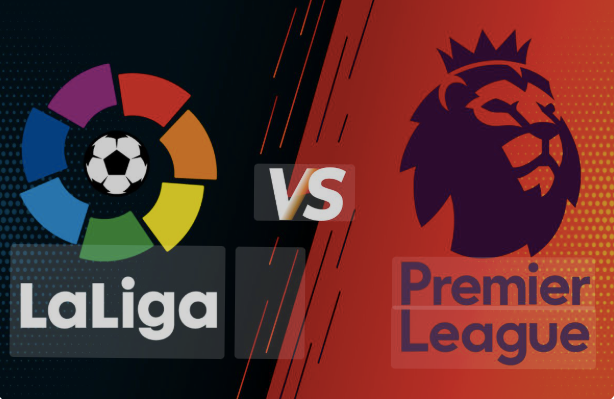Tactical Evolution of Manchester City Under Guardiola: What Comes Next?

When Pep Guardiola took charge of Manchester City in the summer of 2016, the Premier League was already anticipating a revolution. Guardiola, renowned for his footballing philosophy that redefined the modern game at Barcelona and further honed at Bayern Munich, was not just another big-name manager.
Fast forward to today, and Guardiola has left an indelible mark on Manchester City’s playing style, turning them into one of the most dominant forces in European football.
But with nearly a decade at the helm and whispers about what the future holds, it’s worth diving deep into how his tactics have evolved and where the club might go from here.
The Guardiola Blueprint: Foundations in Possession
Guardiola’s football philosophy has always been rooted in control. From the outset, his Manchester City sides emphasized maintaining possession, positional discipline, and methodical build-up play.
He imported many of his ideas from his Barcelona days, especially the concept of “juego de posición” a spatial structure designed to dominate territory and rhythm.
In his debut season (2016–17), City played in a very fluid 4-3-3 system. Full-backs pushed high and wide, wingers cut inside, and a lone pivot often Fernandinho dictated tempo from deep.
However, the English game’s physical demands and unpredictability posed challenges. Goalkeeper Claudio Bravo, chosen for his ball-playing skills, struggled under pressure, and City’s defensive fragility was often exposed.
Despite some growing pains, Guardiola refused to abandon his principles. Instead, he adapted them reshaping the Premier League’s perception of what was tactically possible.
Reinforcement Through Recruitment
A key part of Guardiola’s evolution was the transformation of the squad. The summer of 2017 marked a turning point.
In came Ederson, whose ability to distribute with both feet made him the prototype modern goalkeeper. Kyle Walker, Benjamin Mendy, and Danilo were signed to inject pace and flexibility into the full-back roles.
With a more robust and technically proficient team, Guardiola’s tactical ideas began to flourish. Manchester City stormed to the Premier League title in the 2017–18 season, amassing 100 points in a campaign defined by domination. They didn’t just win they controlled every aspect of the game.
The system remained a nominal 4-3-3, but within it lay a host of micro-tactics: inverted full-backs, overloading specific zones, and intelligent rotations that disoriented opposition shapes.
Kevin De Bruyne and David Silva operated as dual advanced playmakers, while Fernandinho continued as the single pivot. Wide attackers like Leroy Sané and Raheem Sterling provided width, pace, and directness.
The “Centurions” season wasn’t just a triumph in results it was a manifesto on how Guardiola intended to reshape English football.
Tactical Flexibility: From Rigidity to Adaptation
One of Guardiola’s greatest strengths has been his ability to evolve. By the 2018–19 season, Premier League opponents had begun adjusting. Teams sat deeper, compacted central areas, and targeted City on the break. Guardiola responded by diversifying his approach.
The full-backs began tucking into midfield more frequently Walker and Zinchenko became auxiliary midfielders in possession. The wingers stayed wider to stretch defensive blocks. In some games, Guardiola even deployed a back three, pushing one full-back into central areas while the other provided width.
One notable innovation was the “false full-back” role Zinchenko and João Cancelo exemplified this by tucking into midfield zones during build-up play. This served two functions: creating numerical superiority in midfield and protecting against counter-attacks by maintaining compactness centrally.
The midfield triangle also evolved. Instead of a lone pivot and two attacking eights, Guardiola often paired the pivot with another deep midfielder Gündoğan or Rodri creating a double pivot when needed.
This subtle change gave the team more control against pressing sides and helped shield the defense more effectively.
The Cancelo Era and Total Domination
The 2020–21 season was a masterclass in adaptability. After a shaky start, Guardiola reimagined his setup yet again.
The arrival of Rúben Dias brought defensive solidity, while João Cancelo emerged as a tactical weapon.
Cancelo’s role was revolutionary. Nominally a right-back, he frequently drifted into central midfield during build-up play, acting almost as a deep-lying playmaker. From there, he could dictate tempo, switch play, and break lines.
City now built up in a 3-2-5 shape: three defenders at the back, two midfielders in front of them, and five attacking players occupying various vertical and horizontal lanes. This shape overwhelmed opponents in possession and allowed for rapid counter-pressing upon losing the ball.
With no recognized striker for most of the season, Guardiola turned to a rotating cast of false nines. De Bruyne, Foden, Gündoğan, and Bernardo Silva all played the role at times, confusing defenses with their movement and interchanging positions. The absence of a fixed focal point made City’s attack fluid, unpredictable, and devastating.
City won the league, reached the Champions League final, and did so playing an evolved version of Guardiola-ball more balanced, more mature, and more controlled.
The Haaland Equation: Power Meets Precision
The 2022–23 season ushered in a new chapter with the signing of Erling Haaland. For the first time since Sergio Agüero’s prime years, City had a genuine striker a goal-scoring machine with unmatched physical attributes.
Critics questioned whether Haaland would fit Guardiola’s intricate system. Would the directness of his game clash with City’s measured possession style? The answer: Guardiola adapted once again.
Initially, there were growing pains. City had to learn how to incorporate a player whose game thrived on verticality and rapid transitions. Over time, Guardiola refined the structure.
The full-backs remained crucial often inverting to form a midfield alongside Rodri. The wingers stayed wide, stretching play to create gaps between defenders. De Bruyne operated in a freer role, frequently seeking Haaland’s runs with early deliveries.
City’s shape oscillated between a 3-2-4-1 and a 3-2-5 in possession. The key difference was the directness added by Haaland. Guardiola’s side could now mix their short, patient build-up with explosive counter-moves and vertical passes.
Haaland broke Premier League scoring records, while City won the treble Premier League, FA Cup, and their elusive Champions League. It was the apex of Guardiola’s tactical evolution at City: a blend of structure and spontaneity, possession and penetration.
Tactical Intelligence: Guardiola’s Chessboard
What separates Guardiola from most managers is not just the aesthetics of his football, but the strategic depth behind it. He treats matches like chess games—each move calculated, each piece given a role.
Opposition managers now prepare for Guardiola with a mix of dread and fascination. Will he field four central midfielders? Will he play without a recognized striker? Will his full-backs morph into playmakers or wingers?
City’s tactical flexibility has become its greatest weapon. In a single match, they can morph shapes, overload different zones, and shift tempo. Guardiola has moved beyond formations his football is now about zones, timing, and superiority in every phase of play.
Guardiola’s Legacy at City
Pep Guardiola has done more than win trophies he’s changed the culture of Manchester City.
- He’s made them respected across Europe.
- He’s created one of the most recognizable playing styles in the world.
- He’s developed players, inspired coaches, and redefined Premier League tactics.
City now play football in a way that’s studied, copied, and admired. And while trophies matter, the real success lies in how they were won—with control, courage, and class.
The Future: What Comes Next?
As Guardiola nears a decade at Manchester City, speculation mounts about the future. Will he stay beyond his current contract? Will he seek a new challenge elsewhere? And most intriguingly how will City evolve tactically?
Here are a few possibilities:
1. Evolution Toward a Hybrid Pressing Machine
Guardiola has gradually incorporated more aggressive pressing into his teams. With players like Haaland, Foden, and Alvarez, City have the tools to press high with intensity.
We might see a future version of City blend the control of possession football with the chaos of gegenpressing a high-octane hybrid of Guardiola’s calm and Klopp’s fury.
2. Positional Fluidity 2.0
The next phase may involve even more radical positional interchange. With defenders like Gvardiol and Stones capable of stepping into midfield, Guardiola may implement a truly shape-shifting system where players move dynamically across zones based on the state of play.
Imagine a setup where Rodri drops into defense, Gvardiol surges into midfield, and Foden drifts into a central 10 role all within seconds. It’s not far-fetched; City already show glimpses of this modular football.
3. Increased Integration of Youth
With a world-class academy at his disposal, Guardiola may increasingly integrate younger talents. Rico Lewis has already featured in inverted full-back roles. Others like Oscar Bobb and Micah Hamilton may soon follow.
Young players offer energy and flexibility, and Guardiola thrives on teaching adaptable minds. The next tactical phase may well be built on a foundation of youth, coached to understand and execute complex systems.
4. The Rise of AI and Data Integration
As football embraces analytics, Guardiola never one to resist innovation could usher in a new era of AI-assisted tactical planning.
City’s vast resources in data science could be used to optimize spatial control, identify micro-patterns in opponents, and tailor dynamic in-game strategies.
In a few years, Guardiola may not just be planning for the next game but for the next five minutes within it, aided by real-time data.
5. Guardiola’s Successor and Tactical Continuity
Should Guardiola leave in the near future, the question becomes: who takes over? Will City appoint a like-minded tactician to maintain continuity? Or will they pivot to a new style altogether?
Names like Mikel Arteta or Xabi Alonso have been linked with the role both Guardiola protégés who understand positional play deeply. If the club wants to preserve tactical identity, these successors could refine, rather than replace, the current model.
Conclusion
Pep Guardiola has done more than just win trophies at Manchester City he’s transformed the very way the club plays, trains, and even thinks.
His tactical evolution has been marked by constant refinement, courageous experimentation, and an unwavering belief in his philosophy.
He arrived in England amid skepticism about whether his methods would work in the Premier League. Nine years on, not only have they worked they’ve redefined the standard.
But the beauty of Guardiola’s coaching lies not just in what he’s achieved, but in his relentless pursuit of what’s next. In an era where managers burn out or grow stale, Guardiola remains obsessed with improvement.
The future of Manchester City under Guardiola or the legacy he leaves behind will not be defined by silverware alone. It will be remembered for the layers of tactical brilliance, for the subtle nuances, and for making football not just a game of goals, but a canvas for imagination.








Post Comment